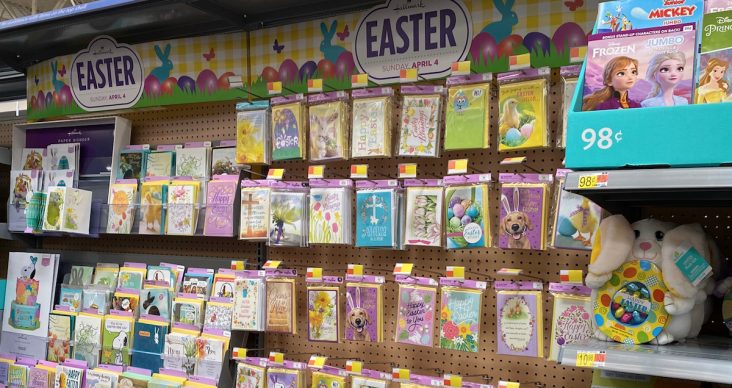U.S. Easter spending expected to be $21.6 billion
by March 31, 2021 11:40 am 781 views

Consumers are spending for Easter at a record average of $179.70, according to the National Retail Federation. The annual survey with Prosper Insights & Analytics found 79% of Americans will celebrate the spring holiday with an accumulative spend at $21.6 billion, down slightly from $21.7 billion last year ahead of the COVID-19 pandemic.
Matt Shay, CEO of the National Retail Federation (NRF), said there is momentum heading into the spring and with holiday events like Easter. He said armed with new stimulus funds from the American Rescue Plan and positive trends in vaccinations, consumer confidence is growing.
“Many have figured out how to celebrate holidays safely with family and that is reflected in consumer spending this Easter,” Shay said.
The federation said the average spend projection of $179.70 per family would be a record, rising 2.1% from last year and jumping 18.8% higher than Easter 2019. The survey found more families are planning to celebrate in ways they might have missed last year as COVID-19 began to spread across the nation.
The biggest spend will be on food at a total of $6.32 billion, down from $6.4 billion a year ago. Another $3.7 billion will be spent on Easter gifts and $3.61 billion on clothes. Projected spending for gifts are higher than last year and apparel purchases are lower. Candy is a hot item for Easter and the category is projected to bring in $3.04 billion, up 5.5% from last year. Consumers will spend $1.43 billion on flowers, down from $1.61 billion a year ago. Home decorations are expected be $1.43 billion, down 5.5% from last year. Greeting cards are expected to rake in $1.08 billion in sales, down slightly from a year ago.
The U.S. Centers For Disease Control and Prevention’s latest guidance on gatherings allows for vaccinated family members to gather outdoors as weather permits. The NRF expects 59% of consumers will cook a holiday meal and spend time with family and friends. The survey found 43% plan to watch television and 31% are planning to hunt Easter eggs with family. Roughly one in three consumers plan to attend church services and 22% said they will attend church virtually. One in four still plan to connect with a loved one by phone or video for the holiday as they are not ready to gather in person.
“Keep in mind that last year’s survey was conducted in early March before the pandemic forced most of the country to shut down and reflects consumers’ pre-pandemic plans,” said Prosper Insights Executive Vice President of Strategy Phil Rist. “This year’s numbers reflect not just consumers’ resilience in the last 12 months but also the enduring popularity of Easter.”
Retail analysts have said they expect consumers to get out and spend some of the federal stimulus money hitting bank accounts this month. They expect discount stores to the biggest winners this spring as 48% of the respondents said that’s where they plan to shop for their Easter purchases. Another 35% said they will hit department stores that are offering sales on apparel and home furnishings. Roughly 23% said they would go to specialty stores and small businesses to make purchases for Easter. Roughly 35% said they will shop online, the highest percentage in the survey history.
OTHER SPENDING PATTERNS
Analysts with Wells Fargo recently polled 1,000 U.S. consumers to analyze post-pandemic shopping behaviors. This survey data indicates 40% said they need to purchase make-up and cosmetics and 37% said apparel. Wells Fargo analyst Ike Boruchow said specialty stores such as Ulta and Sephora are expected to see double-digit same-store sales this year. He said at-leisure wear sales and home goods are expected to slow this year as these categories outperformed amid the pandemic.
The Wells Fargo survey found just 31% said they plan to purchase at-leisure apparel in the near term and 33% said it the same about items for the home. Boruchow also noted off-price and discount retailers such as Ross Stores, TJ Maxx and Burlington are likely to perform well this spring as consumers seek to refresh their wardrobes.
Retail consultant Jan Kniffen of J. Kniffen Worldwide said fashion retail is slated for a big spring and summer. He told Talk Business & Politics the top selling items at Urban Outfits in recent weeks have been dresses and shoe sales after nearly a year of lackluster performance. Kniffen said consumers are not quite ready to go vacation, but are ready to go out to dinner and other smaller social gatherings and will want to have something new to wear. He expects as dress sales increase so will shoes and handbag sales.
“Plenty of consumers have not had new clothes for going out in 18 months and they are ready to shop,” Kniffen said.
